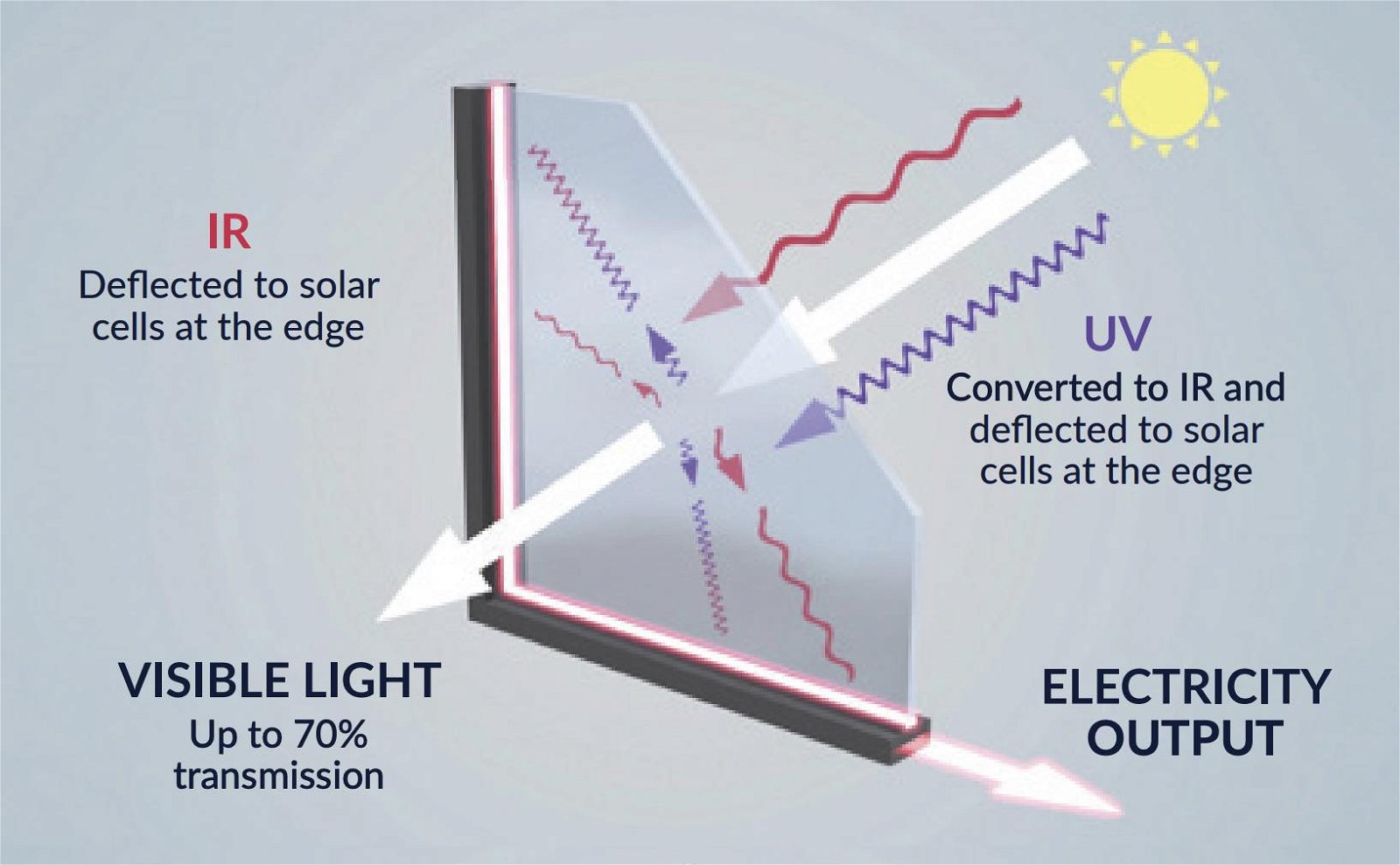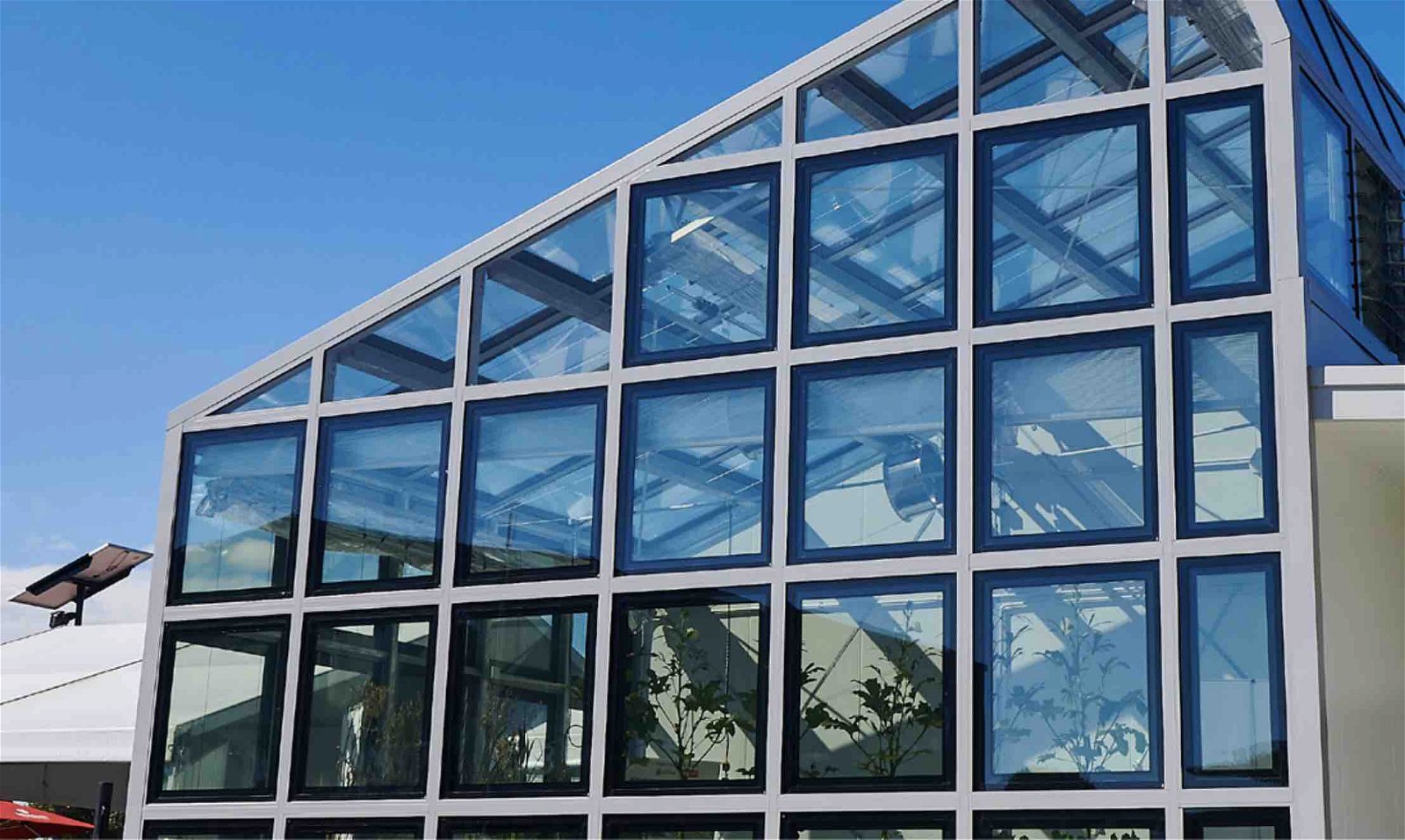In an era where renewable energy sources are becoming necessities, new innovations are constantly emerging that allow us to harness nature’s resources more efficiently.
One of these innovations is solar glass, the likes of which companies like ClearVue PV are currently developing. This new technology generates electricity through glass, potentially redefining the functionality and aesthetics of architectural structures.
ClearVue PV, an Australian-based technology company, has spent years researching to develop a type of glass that can harness solar energy. Much like a solar panel, this transparent glass can generate electricity. Unlike traditional solar panels that necessitate specific placements and sometimes alter the aesthetics of buildings, solar glass incorporates seamlessly into architectural designs, offering a dual functionality of serving as a window or facade and an energy generator.
The technology is simple: solar glass utilizes micro and nanoparticles embedded within the glass that direct the solar energy toward the edges of the glass panel. At the edges, thin traditional solar PV cells capture the sunlight and convert it into electricity. This mechanism allows the glass to remain transparent while harnessing solar energy, a significant leap from the conventional opaque solar panels.


A recent study published in MDPI’s peer-reviewed Technologies journal, focusing on the practical applications of ClearVue PV’s solar glass technology, highlighted its contributions to the construction and agriculture sectors. The high-transparency solar glass boasts up to 70% visible light transmission, merging the benefits of natural light with electricity generation. Tested extensively in a greenhouse at Murdoch University in Perth, Western Australia, different designs of these solar windows demonstrated a power output potential of around 30-33 Watts per square meter, with some variations in energy harvesting performance noted among the designs.
Field tests revealed that these solar windows could generate up to 19 kWh of electricity per day, significantly offsetting energy costs by nearly 40% in the greenhouse. This practical application illustrated a promising stride towards blending energy savings with maintaining agricultural productivity, hinting at a bright future for such technologies in reducing energy expenses and promoting sustainability in urban and agricultural settings.
Moreover, integrating solar windows could reduce the need for traditional solar panels. Conventional solar panels occupy space, require unique mounting systems, and can be eyesores. In contrast, solar glass is a built-in solution that saves space and still provides a significant amount of energy generation. This feature makes it an attractive alternative to traditional solar panels, especially in urban settings where space is at a premium.
“Our technology presents a paradigm shift in the way glass will be used in building construction, automobiles, agriculture, and specialty products. Glass will no longer be just a component of construction but also a renewable energy resource,” Victor Rosenberg, the Executive Chairman of ClearVue PV, said.
ClearVue is not the only company involved in this technology. Canadian-based Mitrex and Spanish-based Onyx Solar have also developed similar technology, utilizing multiple surfaces, including windows and glass, as collectors for solar power.
While ClearVue’s study is essential, the overall collective social push and effort to alter infrastructure for renewable energy harvesting is necessary for the growing energy needs. Solar windows, along with other technology such as rain panels, artificial photosynthesis, and aqueous battery technology, all alter humanity’s move from fossil fuels towards a greener future.
Solar glass technology extends beyond buildings and greenhouses, opening doors to multiple applications across different sectors. For instance, the automotive industry could greatly benefit from this innovation by integrating solar glass into vehicle windows and sunroofs, facilitating on-the-go charging and reducing reliance on external charging infrastructure. Additionally, the technology can find its place in public infrastructure projects such as bus shelters, solar benches, or even sound barriers along highways, turning otherwise passive structures into active energy generators. The adaptability of solar glass also holds promise in the realm of portable electronics, where solar glass can be employed in device screens to provide a self-charging solution. Moreover, temporary shelters equipped with solar glass can provide a crucial power source in disaster-stricken or remote areas, enhancing resilience and self-sufficiency. In straightforward terms, every glass panel could be a source of clean energy.
The ease of integrating solar windows into buildings and its capability to generate electricity efficiently make it a promising solution for achieving energy sustainability. As more buildings adopt this technology, it could significantly contribute to reducing the carbon footprint, bringing us a step closer to a greener and more sustainable future.
MJ Banias is a journalist and podcaster who covers security and technology. He is the host of The Debrief Weekly Report and Cloak & Dagger | An OSINT Podcast. Follow him on Twitter @mjbanias.

